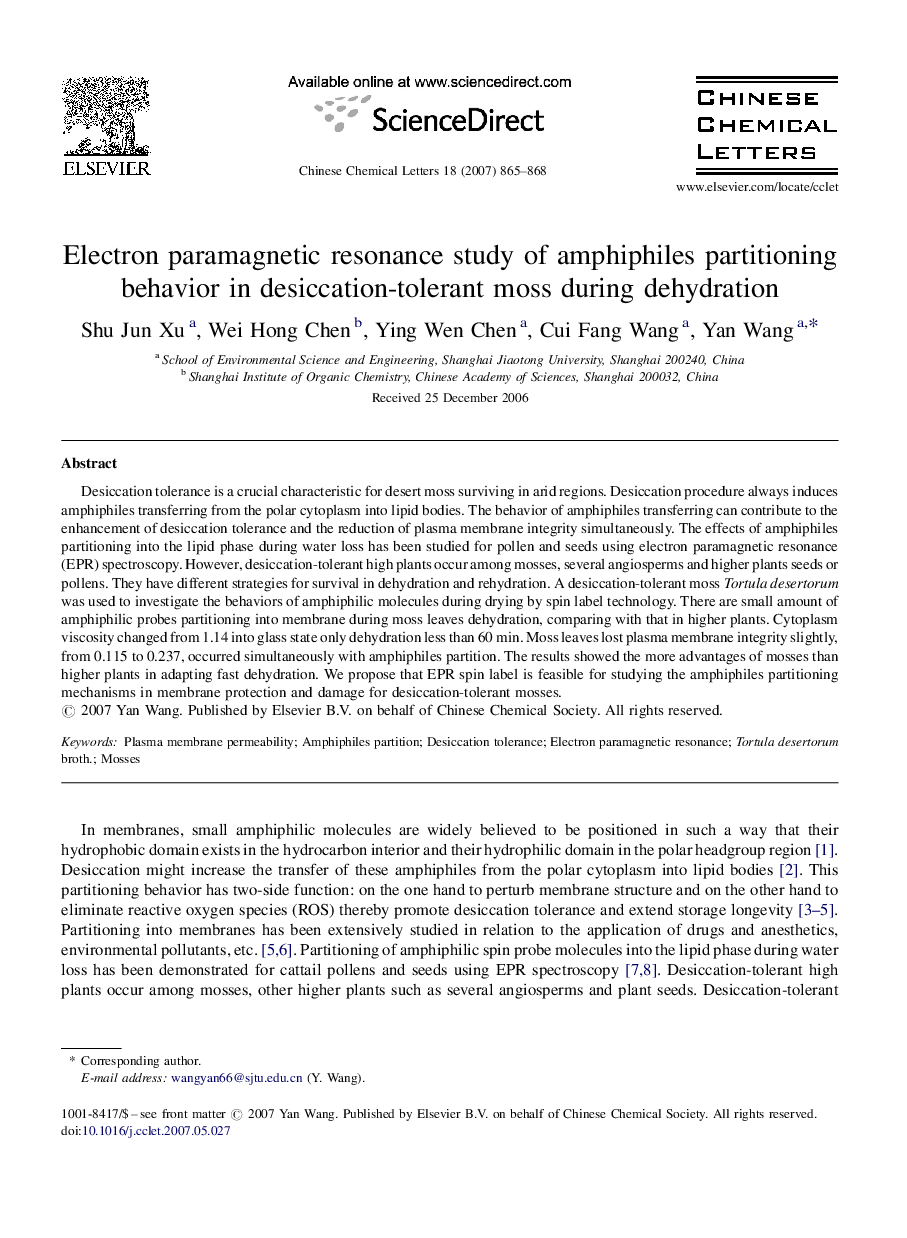| Article ID | Journal | Published Year | Pages | File Type |
|---|---|---|---|---|
| 1256057 | Chinese Chemical Letters | 2007 | 4 Pages |
Abstract
Desiccation tolerance is a crucial characteristic for desert moss surviving in arid regions. Desiccation procedure always induces amphiphiles transferring from the polar cytoplasm into lipid bodies. The behavior of amphiphiles transferring can contribute to the enhancement of desiccation tolerance and the reduction of plasma membrane integrity simultaneously. The effects of amphiphiles partitioning into the lipid phase during water loss has been studied for pollen and seeds using electron paramagnetic resonance (EPR) spectroscopy. However, desiccation-tolerant high plants occur among mosses, several angiosperms and higher plants seeds or pollens. They have different strategies for survival in dehydration and rehydration. A desiccation-tolerant moss Tortula desertorum was used to investigate the behaviors of amphiphilic molecules during drying by spin label technology. There are small amount of amphiphilic probes partitioning into membrane during moss leaves dehydration, comparing with that in higher plants. Cytoplasm viscosity changed from 1.14 into glass state only dehydration less than 60Â min. Moss leaves lost plasma membrane integrity slightly, from 0.115 to 0.237, occurred simultaneously with amphiphiles partition. The results showed the more advantages of mosses than higher plants in adapting fast dehydration. We propose that EPR spin label is feasible for studying the amphiphiles partitioning mechanisms in membrane protection and damage for desiccation-tolerant mosses.
Related Topics
Physical Sciences and Engineering
Chemistry
Chemistry (General)
Authors
Shu Jun Xu, Wei Hong Chen, Ying Wen Chen, Cui Fang Wang, Yan Wang,
